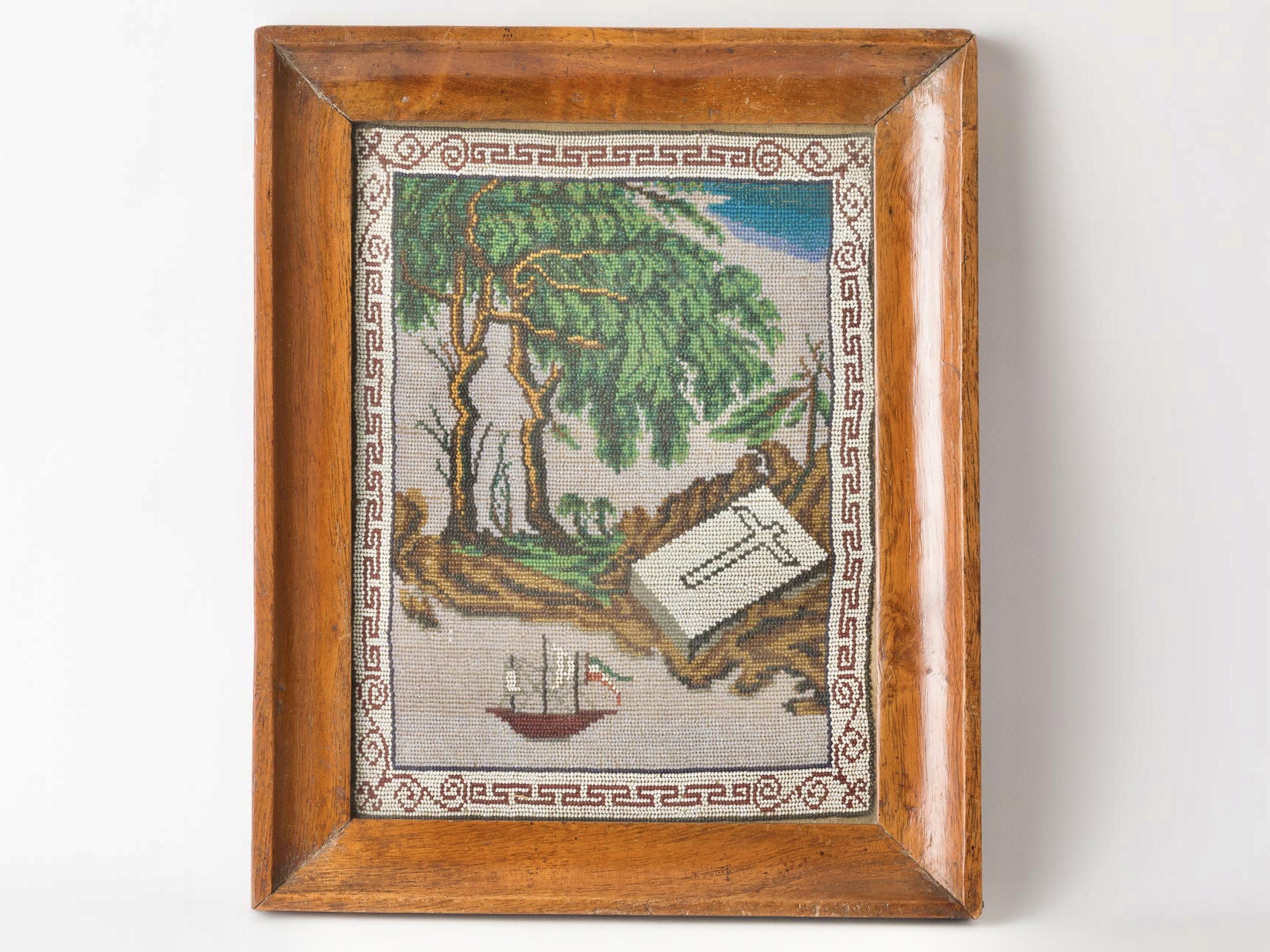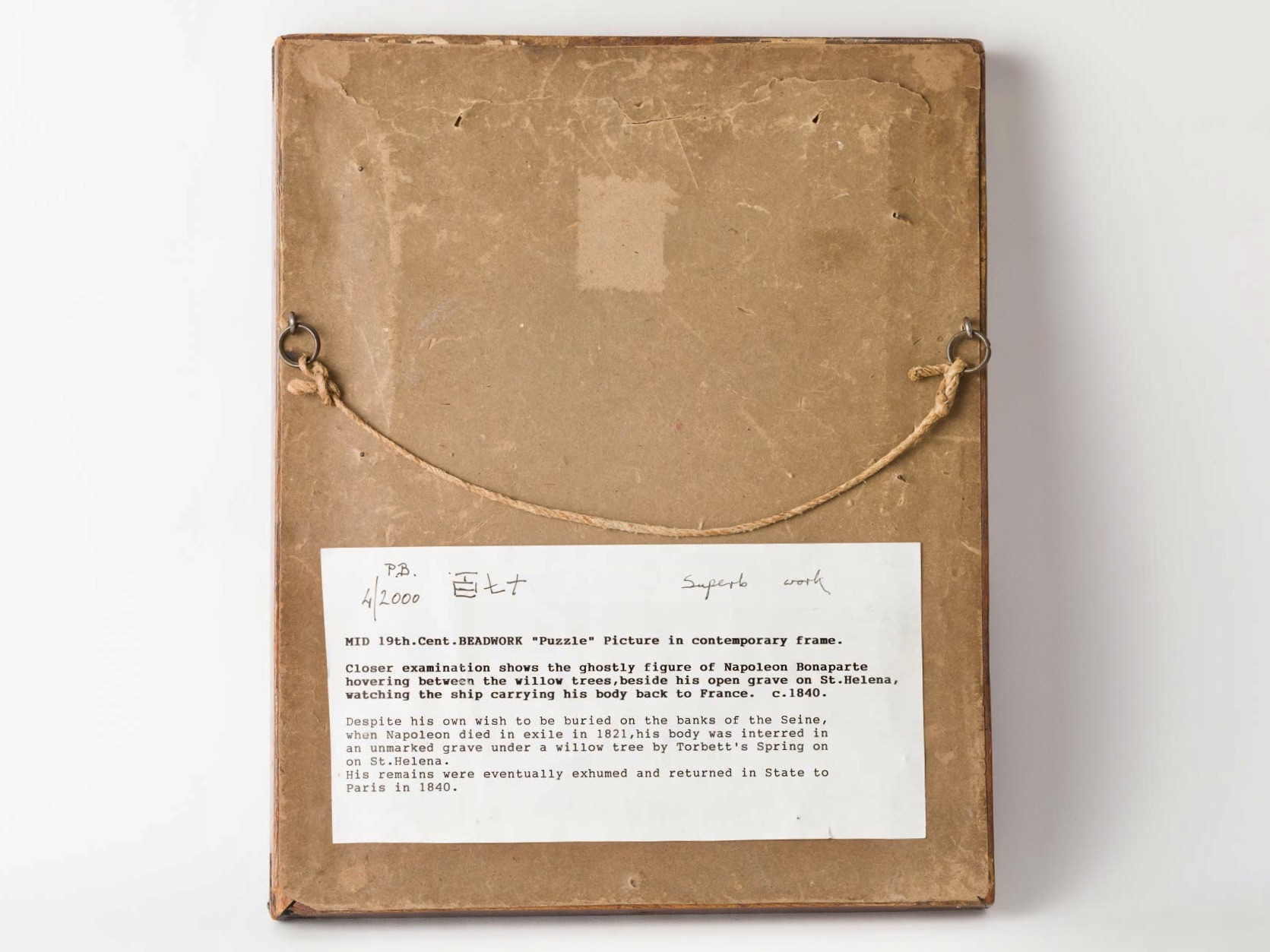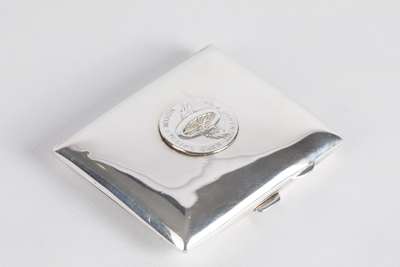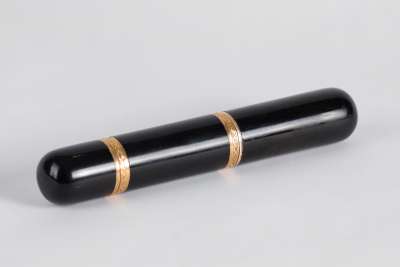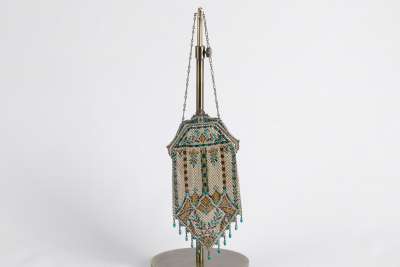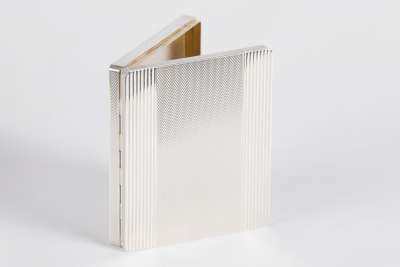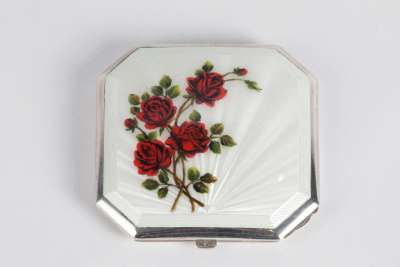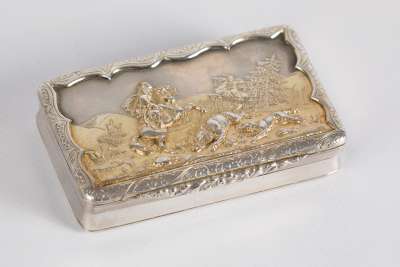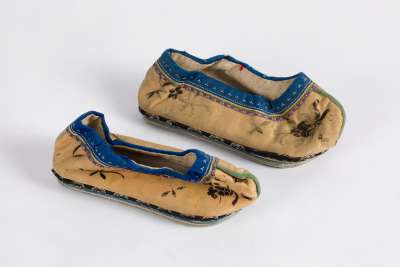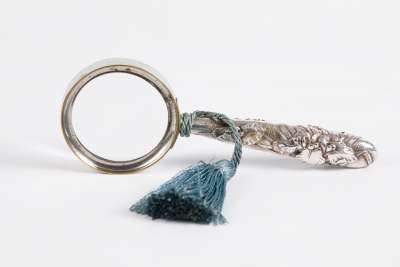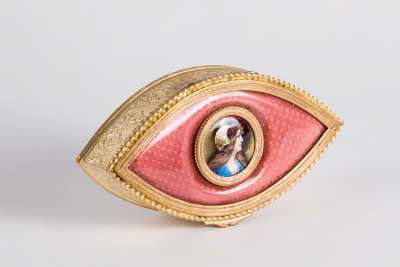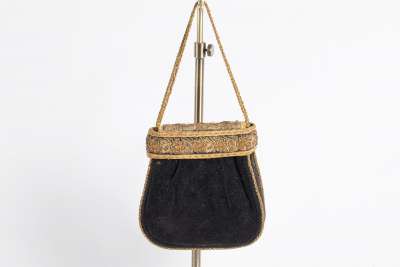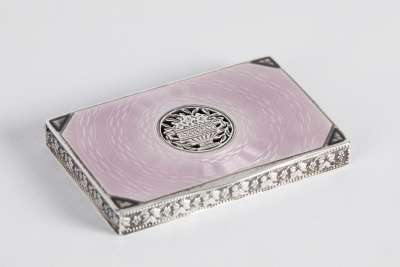This beadwork puzzle picture titled 'Napoleon's Ghost' dates back to around 1840-1850 and is an intriguing example of historical beadwork artistry. The piece is inspired by prints depicting Napoleon Bonaparte's spectral presence in the Valley of the Willows, where he was initially buried in 1821. Crafted with meticulous attention to detail, the image subtly reveals Napoleon's ghostly figure amidst trees, with a tricolour ship representing the voyage of the Belle Poule, which returned his remains to France in 1840. The scene is framed within an oak border featuring a Greek key design and scrollwork, common in decorative arts of that era. This artwork originates from the United Kingdom, where beadwork was a popular pastime among young women in the 19th century.
Condition Report
The 'Napoleon's Ghost' beadwork puzzle picture is in good condition, showing minimal wear that is consistent with its age and historical use. The beadwork remains intact, with only slight fading of colours that is typical for an item of its period. The oak frame, also original, retains its structural integrity, with minor surface scuffs that do not detract from its overall appearance. The glass protecting the beadwork is clear, ensuring that the intricate details of the piece are easily visible. This item has been well-preserved, maintaining its historical charm and visual impact, making it a valuable addition to any collection.
Dimensions
Weight: 625gm, Height: 25cm, Width: 23cm.
A Puzzle Picture to Fascinate and Delight
The beadwork puzzle picture was intended to captivate viewers by inviting them to find hidden images within the composition. This piece serves as both a decorative and interactive artwork, typical of the puzzle prints that gained popularity in the early 19th century. Puzzle pictures often required careful observation and engagement, making them a source of entertainment and conversation in drawing rooms. 'Napoleon's Ghost' is a testament to the era's fascination with such enigmatic and thought-provoking pieces.
Victorian Beadwork Artistry
This beadwork picture is a prime example of Victorian artistry, which often incorporated intricate designs and themes inspired by historical events. The use of beads to create images was a popular form of expression during this period, reflecting the era's appreciation for detailed craftsmanship and decorative arts. The Greek key and scroll border are indicative of Victorian design trends, showcasing a blend of classical influences and contemporary aesthetics. Such pieces were sought after for their ability to combine artistic skill with storytelling, making them treasured items in Victorian homes.
The Craft of Beadwork
Beadwork in the 19th century involved a meticulous and time-consuming process, requiring patience and precision. Each bead was individually stitched onto a fabric backing, creating a textured and colourful image. This craft was often practised by women as a leisurely activity, allowing them to engage in creative expression while producing functional or decorative items. The choice of colours and the complexity of the design in 'Napoleon's Ghost' demonstrate the skill and dedication of its maker, highlighting the labour-intensive nature of beadwork and its role in the decorative arts of the time.
Created by Anonymous Artisans
Although the specific maker of 'Napoleon's Ghost' remains unknown, it is likely that the piece was crafted by an anonymous artisan or amateur beadworker in the United Kingdom. During the Victorian era, many such works were created by women who used their skills to produce artworks for personal enjoyment or domestic display. These artisans often remained unrecognised, yet their contributions to the decorative arts were significant, preserving cultural and historical narratives through their creations.
A Treasure for Collectors of Historical Beadwork
Collectors of historical beadwork are often drawn to the intricate detail and historical references found in pieces like 'Napoleon's Ghost'. This beadwork picture not only offers aesthetic appeal but also provides insight into the cultural and historical contexts of its time. Such pieces are appreciated for their craftsmanship and the stories they convey, making them valuable to those who seek to preserve and study the decorative arts of the 19th century. The combination of artistry and history in this piece makes it a desirable addition to any collection focused on Victorian or historical beadwork.
